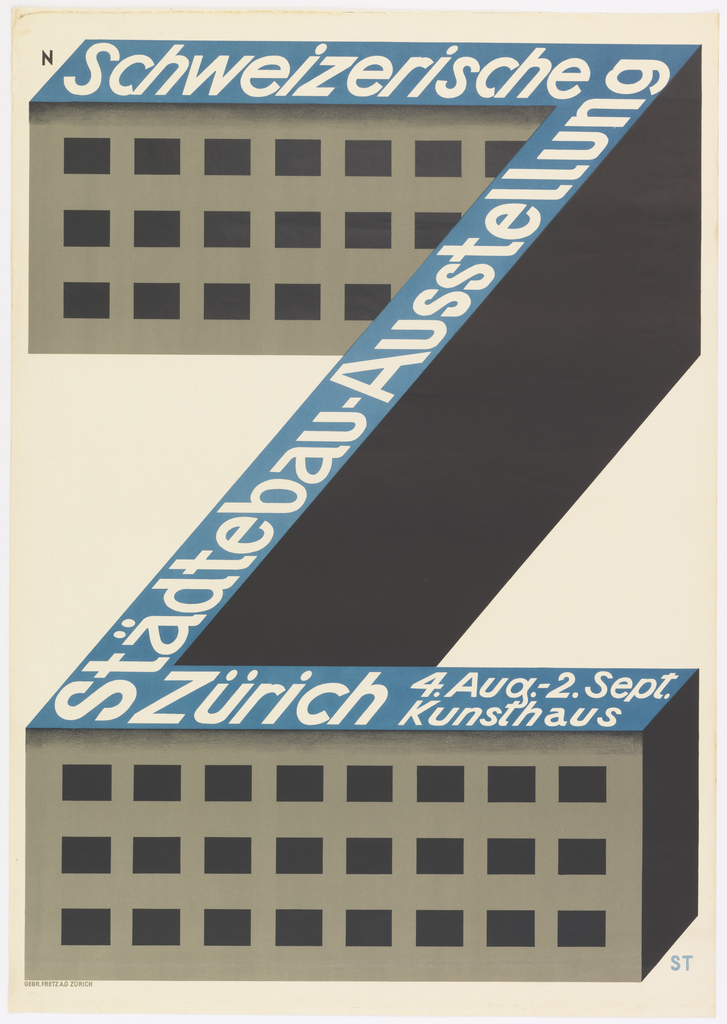Niklaus Stoecklin was one of a group of early 20th century Swiss graphic designers including Emile Cardinaux, Otto Morach, and Otto Baumberger who originally trained as painters. While many of these early graphic designers celebrated the Swiss landscape, Stoecklin, with the Germans Ludwig Hohlwein and Burkhard Mangold, focused on manufactured and industrial good and products.
Studying painting at the Kunstgewerbeschule in Munich with Alexander Zschokke in 1914, and later at the Allgemeine Gewerbeschule in Basel, Stoecklin absorbed the lessons of modernism, creating paintings utilizing basic, flat abstract form and bold compositions. Incorporating these applications in his earliest graphic designs executed in the 1920s, he created striking posters, including this dynamic 1928 poster for a City Planning Exhibition in Zurich. This poster demonstrates an illustrative, hand drawn approach rather than a photographic rendering that characterizes Stoecklin's later, more representative work.
Schweizerische Stadtbau Ausstellung, Stoecklin's rare modernist poster for a Swiss city planning exhibition held at the Zurich Art Museum in 1928, shows the strong influence of Bauhaus design principles. A simply constructed three-story building in the shape of a Z, signifying the Zurich museum, is the single element; the only ornament is the lettering running over the flat roof.
The use of san serif lettering, the strong diagonal movement, and innovative use of line, points to the impact of a new language of modern design. Later during the 1930s, Stoecklin became influenced by photographic realism, a movement called the Neue Sachlichkeit in Germany, which emphasized straightforward, non romantic renditions of everyday objects.
This movement was pioneered in German graphic design by Peter Behrens, Ludwig Hohlwein and Lucian Bernhard early in the century. By 1931 Stoecklin abandoned flat abstraction in favor of hand drawn, full color photographically accurate renditions of industrial products from radio tubes to tweed jackets.
